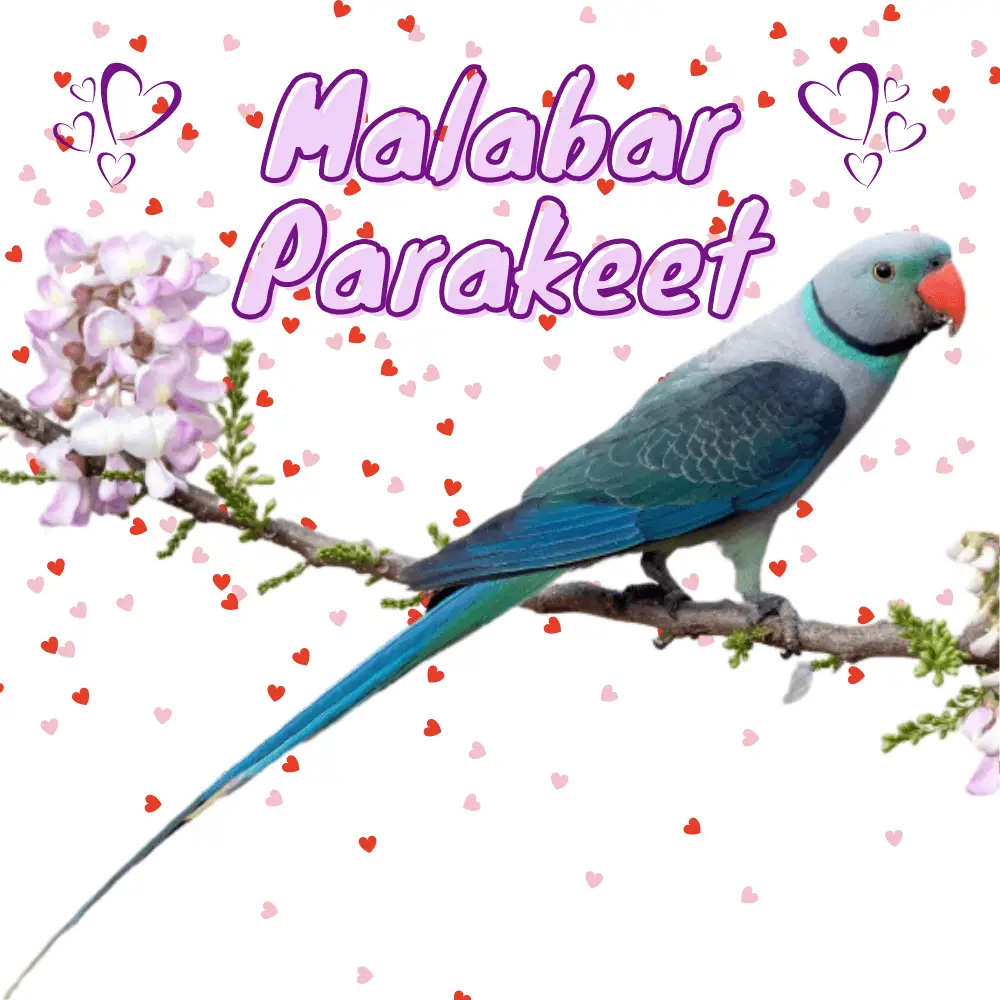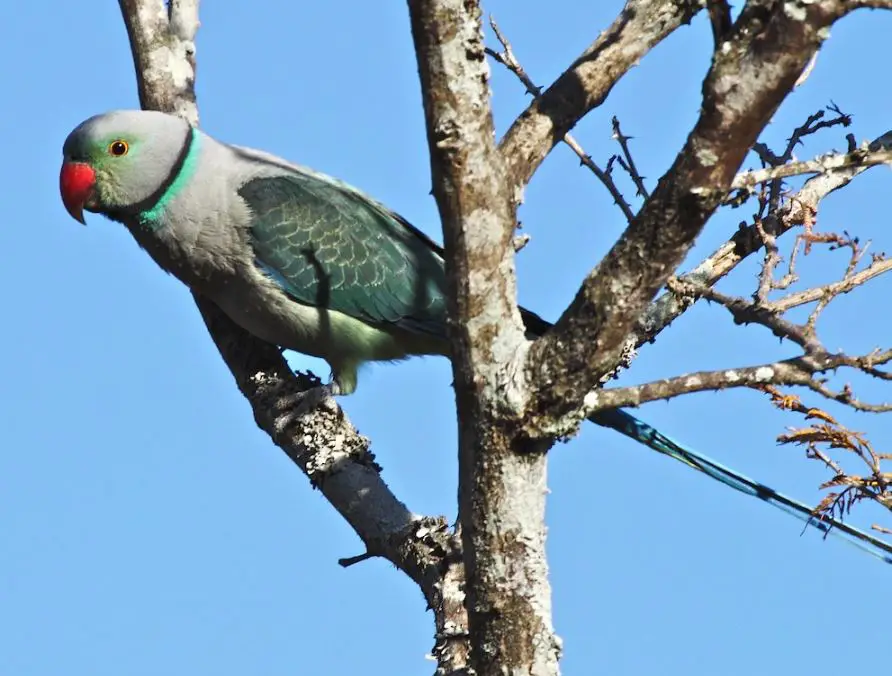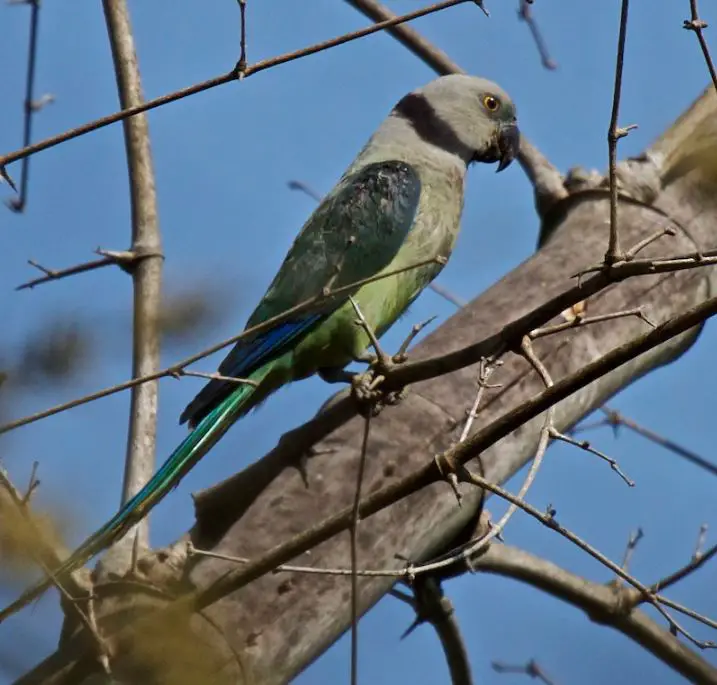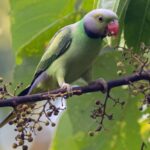
Malabar Parakeet 36–38 cm. Upper mandible red with yellowish tip, lower dull brownish; the area from bill to around eye bluish-green; rest of head warm greyish,
with complete black collar bordered turquoise below, shading immediately into the grey of the upper body; wing-coverts green edged buff, outer wing-coverts and primaries deep blue; belly and thighs light green, rump light turquoise, tail deep blue centrally, green laterally, marginally tipped yellow.
Malabar Parakeet Female Malabar Parakeet lacks turquoise in neck-ring, with mantle and breast pale green, black bill. Immature replaces all grey with green.
Monotypic.

Subspecies
Monotypic.
Distribution
Western Ghats, SW India.
SOURCE: Indian Bird Videos
Malabar Parakeet Habitat
Tropical evergreen and moist deciduous forest, secondary growth, abandoned plantations, and adjacent cultivated clearings, from lowlands to 1600 m, but chiefly at 450–1000 m.
Movement
Resident, but some nomadism in response to food availability occurs.
Diet and Foraging
Grain, seeds, and fruits especially of figs (Ficus), also buds, petals, and nectar, notably Erythrina and Grevillea plants. A crop pest on Sorghum, other cereals, vetches Dolichos, and orchard fruit.
Sounds and Vocal Behavior

The commonest vocalization of Malabar Parakeet is a fairly high-pitched, grating screech, e.g. “krreeeh!” or similar, given in loose series or in rapid succession. When perched, repertoire becomes more varied, but most calls have the same dry grating quality. Also a loud staccato rattle.
Breeding
Dec-Mar. Malabar Parakeet Nest in a hole in tree 6–30 m from ground (high trees preferred), with ironwood (Mesua ferrea) and Grewia tiliifolia particularly favored.
Usually 4–5 eggs (average clutch 4·63); incubation 23 days (27 in captivity) by both sexes, but mostly by the female; female tends young except at end of nestling period when a male does so; nestling period 32 days. Seemingly high breeding success.
Conservation Status

Not globally threatened. CITES II. A BirdLife “restricted-range” species. Common throughout the core of the range. Clearance of forest in parts of the Western Ghats must have reduced range, but not to a degree where serious risk exists.




















